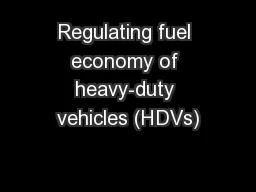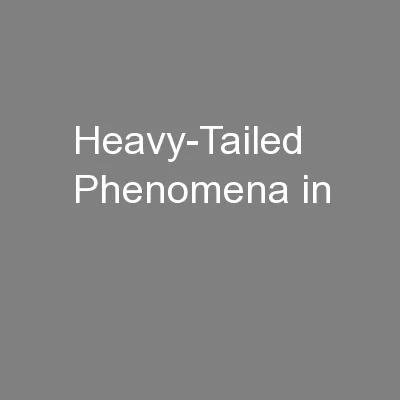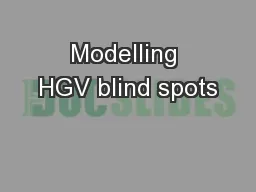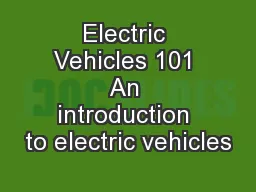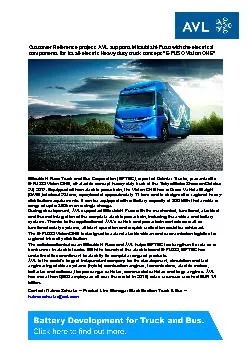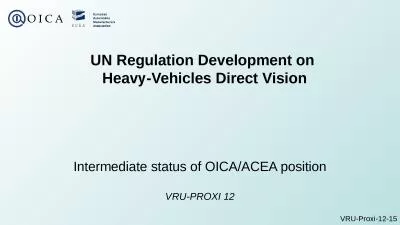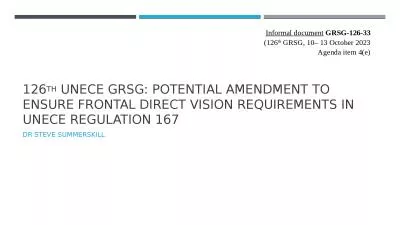PPT-UN Regulation development on Heavy-Vehicles Direct Vision
Author : faith | Published Date : 2024-02-16
OICA position VRUPROXI 11 VRUProxi1106 OICA Position on Direct Vision DV for N3 OICA supports An objective methodology to evaluate close proximity DV with a
Presentation Embed Code
Download Presentation
Download Presentation The PPT/PDF document "UN Regulation development on Heavy-Vehic..." is the property of its rightful owner. Permission is granted to download and print the materials on this website for personal, non-commercial use only, and to display it on your personal computer provided you do not modify the materials and that you retain all copyright notices contained in the materials. By downloading content from our website, you accept the terms of this agreement.
UN Regulation development on Heavy-Vehicles Direct Vision: Transcript
Download Rules Of Document
"UN Regulation development on Heavy-Vehicles Direct Vision"The content belongs to its owner. You may download and print it for personal use, without modification, and keep all copyright notices. By downloading, you agree to these terms.
Related Documents



